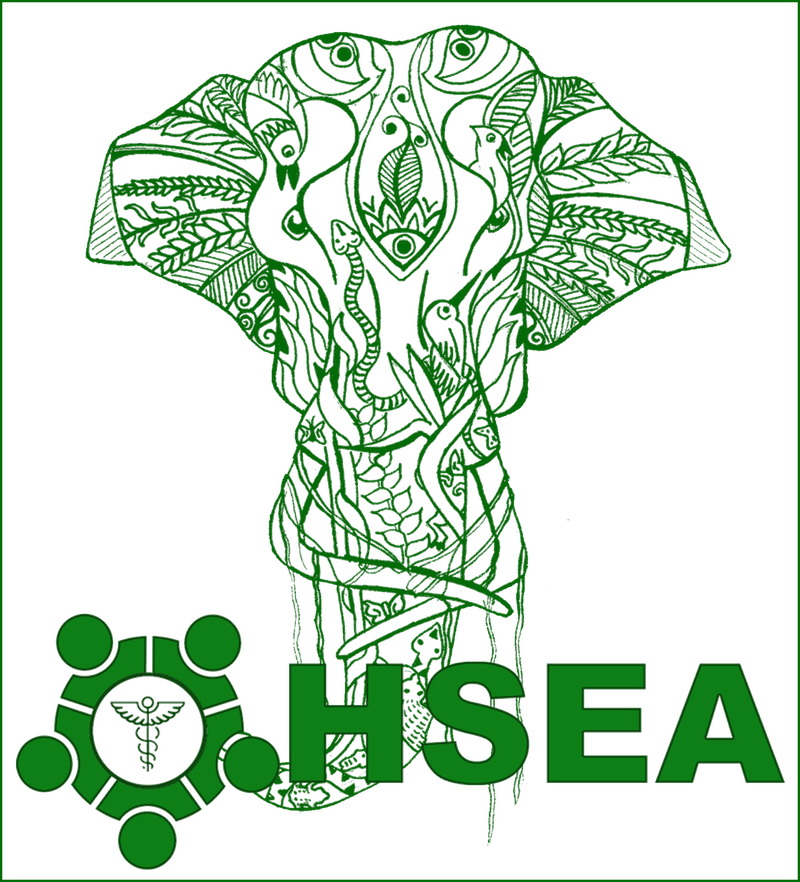A One-Health approach to estimate the prevalence and genetic diversity of gastrointestinal pathogens circulating among elephants, domesticated bovines and the human population living at the edge of the Nakai-Nam Theun National Park, Laos
VIDEO PRESENTATION OF THE PROJECT
INTRODUCTION TO THE PROJECT
Emerging zoonotic diseases are a serious threat to public health and animal conservation. Humans have always shared habitats with wild and domestic animals, but the dynamics of their relationships have changed. Development activities such as roads, dams, and other infrastructure projects can drive encroachment and fragmentation of wildlife habitat, block migration routes, and facilitate poaching of wild animals.
The Nakai–Nam Theun National Park (NNT NP), spanning the eastern part of the Nakai Plateau into the Annamite Mountains up to the Lao–Vietnam border, is considered a biodiversity hotspot. The Nakai Plateau underwent major habitat transformation following the closure of the NT2 hydroelectric dam in April 2008. Prior to dam closure, most of what became the 450 km2 Nakai Reservoir was forested, and an estimated 40% of suitable wildlife habitat on the plateau was lost as a result. As a consequence, people, domestic and wild animals live in increasing spatial proximity to each other. This is leading to an increasing exposure of pathogens for the animals and the human population. Among them, there are gastro-intestinal (GI) parasites. Parasites infecting elephants include trematodes or liver flukes (Fasciola spp.), cestodes or tapeworms (Anoplocephala spp.) and various gastrointestinal nematode or round-worm species (Strongyle sp, including Murshidia, Quilonia, Bathmostomum, Grammocephalus and Equinurbia; Amphistome sp.). Helminthiases (soil transmitted) in particular, are a burden, especially where access to water, sanitation, and hygiene is poor. In NNT NP, wild and domestic animals (especially elephants and domesticated bovines) congregate at artificial salt lick-feeding sites; since the impoundment of the Nakai Reservoir, elephants have moved closer to villages and there has been increasing evidence of human-elephant conflicts, causing potential for pathogens transmission between humans, elephants and domestic
bovines worth investigating.
Our aim is to conduct a pilot study on the Nakai Plateau and around the Nakai Reservoir, to investigate the presence, the genetic diversity and the circulation of gastro-intestinal parasites in humans, domesticated bovines and elephants, and to determine their potential role as reservoir hosts contributing to the environmental sustenance of zoonotic parasitic infections.
PROJECT IN ACTION
Task 1: Filed samplings : collect a total of 200 samples including stool samples from the human population in selected villages and fecal samples from elephants and buffaloes ; over a four weeks period of fieldwork
Goal: investigate the prevalence and genetic diversity of gastro-intestinal parasites, which have the potential to become sustained
reservoirs of zoonotic pathogens and which could be also used as indicators of stress in wildlife threatened by habitat fragmentation
– During the information weeks, each participant was given a stool collection container. They were asked to collect a portion of their stool on a specific date.
– On animal : It was collected non-invasively, stored in RNAlater and kept at -80 C.
Task 2: Analysis: The samples were dispatched to two different laboratories (NAHL, Vientiane, Laos and Sabah Wildlife Health, Genetic and Forensic Laboratory, Kota Kinabalu, Sabah, Malaysia).
Genotyping of autosomal microsatellite loci has enabled to discriminate the faecal samples collected in the wild and to determine the prevalence of parasites infection. PCR amplification, sequencing and maximum likelihood analysis of target DNA fragments was performed to determine the prevalence and genetic diversity of GI parasites circulating in these selected human and animal populations.
NEXT STEPS
- All the stool samples will be analysed by students from the Lao TPHI, under the supervision of Professor Somphou Sayasone, to detect the presence of parasitic eggs in the stool. A master’s student (Ms Xaiyavong Phengsavanh) and a technician (Mr Phonekeo Seng Aloun) from the LAOTPHI will begin extracting DNA from the samples collected before the end of March and will then travel to Malaysia to carry out microsatellite analyses on wild elephants and domestic cattle between May and June in order to determine the number of actual individuals collected. We are currently finalising the multiplexing approach to solve this problem with our partners in Malaysia.
Going beyond microscopic analysis and adopting a molecular approach to determine the presence and prevalence of pathogens in stool samples is something new for the LaoTPHI Masters students. - During July, in collaboration with the international joint laboratory PRESTO (Protect-dEtect-STOp), an expert in loop-mediated isothermal amplification (LAMP), Ms Sayamon Hongjaisee, from Chiang Mai University, Thailand, will join us to give a seminar on these procedures and target two pathogens for analysis from the stool samples collected. At the end of August, the selected student will be ready to defend her master’s thesis. In addition, this project, through the establishment of collaborations and the validation of research permits in the Khamounane region and Nam Theun National Park, has enabled us to plant a seed for future collaborations on the circulation of gastrointestinal parasites, encompassing both animal and human health.
- Some of the extracted DNA will be sent in April to the Faculty of Veterinary Medicine at the University of Brno, in the Czech Republic, where the principal investigator has established a collaboration in the past on the parasites of the great apes of Africa. Under the supervision of Barbora Pafco and Klara Petrzelkova, the samples collected will be analysed using a next-generation sequencing approach in order to compare the diversity of strongyles circulating in the three population categories. Funding permitting, we intend to extend the sampling to a wider area in the Nakai Plateau region.
LEARN MORE
ONENAKAI ON THE WEB
XXXX
CONTACT
Project leader : Sabrina LOCATELLI (sabrina.locatelli@ird.fr)
Associated researchers :
COUDRAT Camille (camillecoudrat@gmail.com)
GOOSSENS Benoit (goossensbr@cardiff.ac.uk)
PHAKEOVILAY Chiobouaphing (cphakeovilay@gmail.com)
Countries involved : Laos and Malaysia







